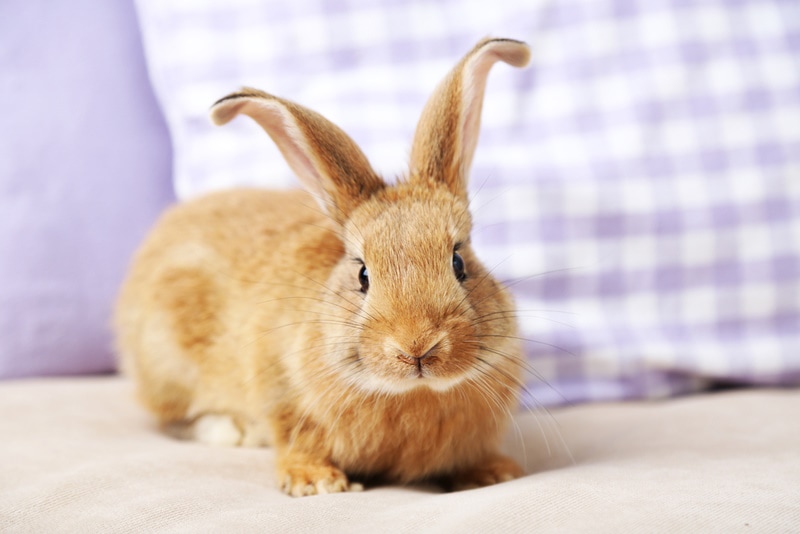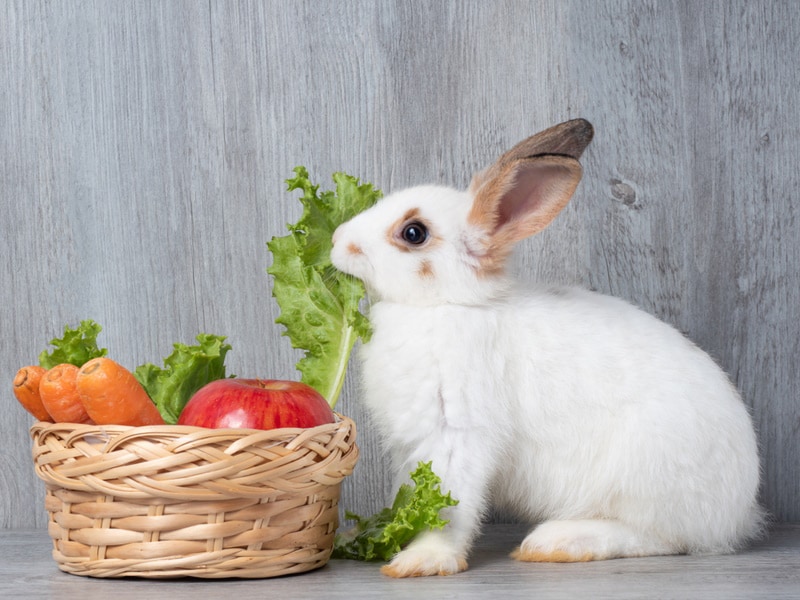Dutch Rabbit: Pictures, Care Guide, Lifespan & Traits

Updated on
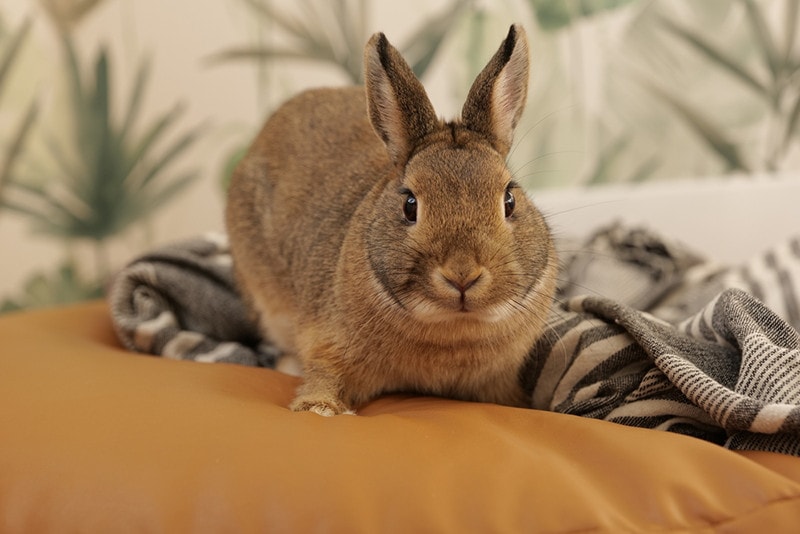
The Dutch rabbit is one of the oldest rabbit breeds in the world. It is easily distinguishable from its color markings, and it’s small to medium size. This breed is widely kept as a pet because of its curious, playful, and easy-going nature. Owning one can be a rewarding experience for all your family members.
In this article, we will discuss the Dutch rabbit in terms of its traits, lifespan, and how to care for this pet rabbit. Read on to learn more.
| Size: | Small to medium |
| Weight: | 3.5 to 5.5 lbs |
| Lifespan: | 5–10 years |
| Similar Breeds: | Dwarf papillon, mini rex, Netherland dwarf |
| Suitable for: | First-time rabbit owners, families with young children, and indoor rabbit enthusiasts |
| Temperament: | Gentle, intelligent, requires social interaction |
The Dutch rabbit may be considered as a miniature breed in some circles due to their relatively small size, but they aren’t exactly dwarfs.
These rabbits are mostly used in laboratories as test animals, kept as pets, or bred for show performances. The breed features a rare two-tone pattern, which makes them the easiest to recognize among rabbit breeds.
Dutch Rabbit Breed Characteristics
How Much Do These Rabbits Cost?
Due to their widespread popularity, Dutch rabbits don’t cost much. You can expect to purchase one for between $30 and $90. However, this will depend on the color variations, intended purpose, and your location. For instance, Dutch rabbits bred for shows are expected to cost more than pet or meat varieties. Also, purchasing a breed with a specific color might cost you more.
But due to their generally low-price range, you can easily find this breed at any standard pet store.
Temperament & Intelligence of the Dutch Rabbit
Dutch rabbits are affectionate creatures that will enjoy the company of all the members of your household, including young children. They are known to be calm, playful, and smart.
Unlike other breeds, the Dutch rabbit is not prone to aggressive tendencies. It is more likely to scurry away and hide than confront someone when they feel threatened or scared.
It is a highly active rabbit breed, and as such, will need some time to spend outside the cage for exercise to stay healthy. It is mainly active during dusk and dawn, and you will often find it lounging or napping during the day.
When this rabbit is happy, it may twirl and jump around in appreciation. Unfortunately, it is susceptible to separation anxiety, and can easily get bored or even depressed when left alone for a while.
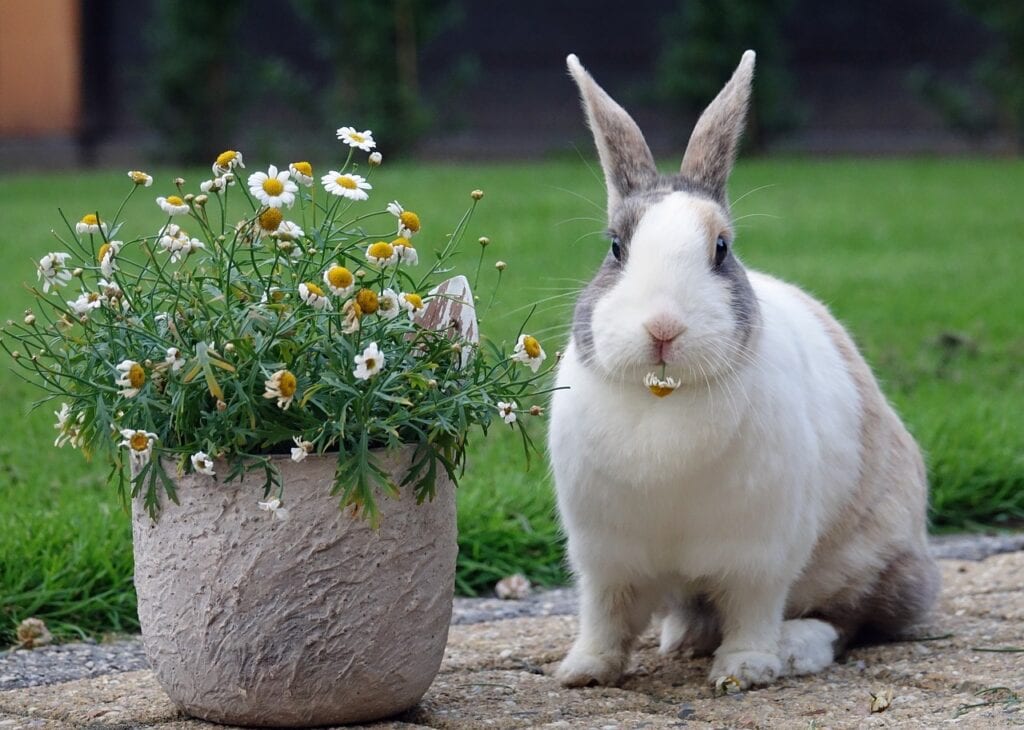
Do These Rabbits Make Good Pets? 👪
Without a doubt they do. They are an ideal pet for people looking to own an alternative to guinea pigs or a housecat. They make phenomenal pets due to their friendly disposition. They are especially suitable for older kids as first-time pets, people living on their own, young couples, as well as senior citizens.
However, even though they can get along well with young children, it is never a good idea to let young kids play with it unsupervised.
Does This Rabbit Get Along With Other Pets?
Dutch rabbits are social creatures and will amicably get along with other pets. However, this breed would be happier when sharing its home with a companion rabbit, and, according to research, paring Dutch rabbits can even increase their overall life expectancy.
While they may get along with most pets, they are a bit squeamish around dogs and cats. Dogs tend to have a prey drive, which prompts them to chase after smaller animals even with adequate socialization. Unsocialized cats are also likely to pounce on an unsuspecting Dutch rabbit.
Therefore, it would be best if you avoided cats and dogs, especially the overly aggressive ones, in a home where you intend to keep Dutch rabbits.
 Things to Know When Owning a Dutch Rabbit:
Things to Know When Owning a Dutch Rabbit:
Food & Diet Requirements 🥕
The dietary requirements for Dutch rabbits are not all that different from other rabbit breeds. Their diet should include at least 70% fresh hay consisting of whole plant shoots. Alfalfa is the most suitable hay for a pregnant doe and kittens, while Timothy hay is the best for adult rabbits.
A hay diet is beneficial for your rabbit’s dental and digestive systems. When a rabbit chews it, it naturally files the teeth to prevent them from overgrowing and penetrating its jaws and face.
The remaining 30% of the diet should feature equal parts fruits, vegetables such as broccoli and leafy greens, and high-quality pellets.
Your rabbit should also have constant access to fresh water. Additionally, since a Dutch rabbit is likely to eat most things, it is best if you first carry out extensive research on rabbit-appropriate diets.
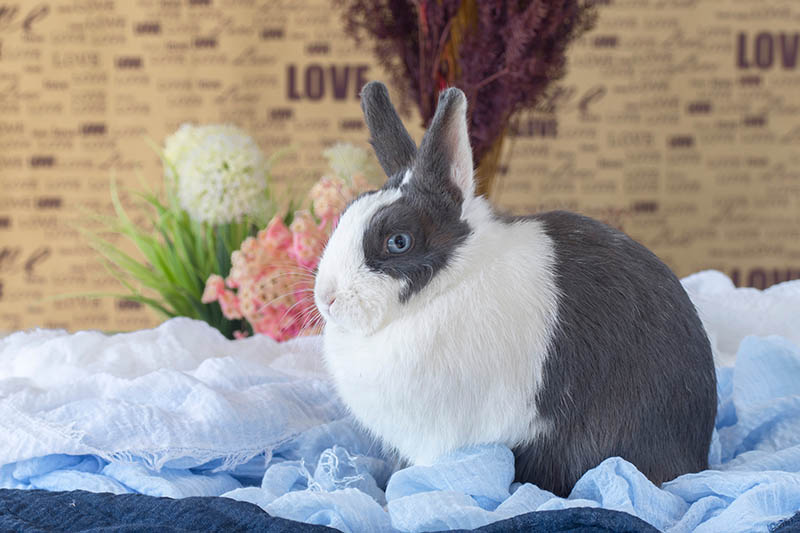
Habitat & Hutch Requirements 🏠
Even though Dutch rabbits may feature a miniature body structure, they still need a sizable hutch to live comfortably. Depending on the available space and your living conditions, you can opt to keep the rabbit outdoors or indoors.
If you decide to keep your bunny outside, the cage should measure at least 2 feet long and 2 feet wide, but the bigger, the better. Rabbit experts recommend you use wire cages but steer clear of ones with wire bottoms because they can easily result in sore hocks. Instead, look for a safe rabbit material and line the bottom with rabbit-appropriate bedding to improve its comfort.
Also, ensure you visit your rabbit frequently because they thrive on human connections.
If you opt to keep your Dutch rabbit indoors, things are a little more straightforward because the bunny will become part of the family. Just make sure the hutch is wire-free and big enough for maneuverability. Thankfully, there are plenty of options available for the bedding material for indoor rabbits, including fleece and pulp. Nevertheless, avoid materials such as pine/cedar wood shaving and sawdust because they can cause respiratory problems.
Whether kept indoors or outdoors, you should spot-clean the rabbit’s hutch, making sure to remove the bedding at least once a week to maintain the habitat’s hygiene.
Exercise & Sleeping Needs 🐇
While in the wild, rabbits can run approximately three miles per day. So, avail enough exercise time for your pet Dutch rabbit to thrive. In that regard, offer your rabbit at least 3 hours of free-range time to roam around and explore. This can be inside your house or around a secluded area in your yard. You can also designate at least two hours of cuddle time.
Exercise time is a great opportunity to keep your Dutch rabbits physically and mentally stimulated. It is also a great way for you to bond with your rabbit as it runs and hops around. If your rabbit doesn’t receive the necessary exercise time, it may experience decreased gastrointestinal mobility and associated stress.
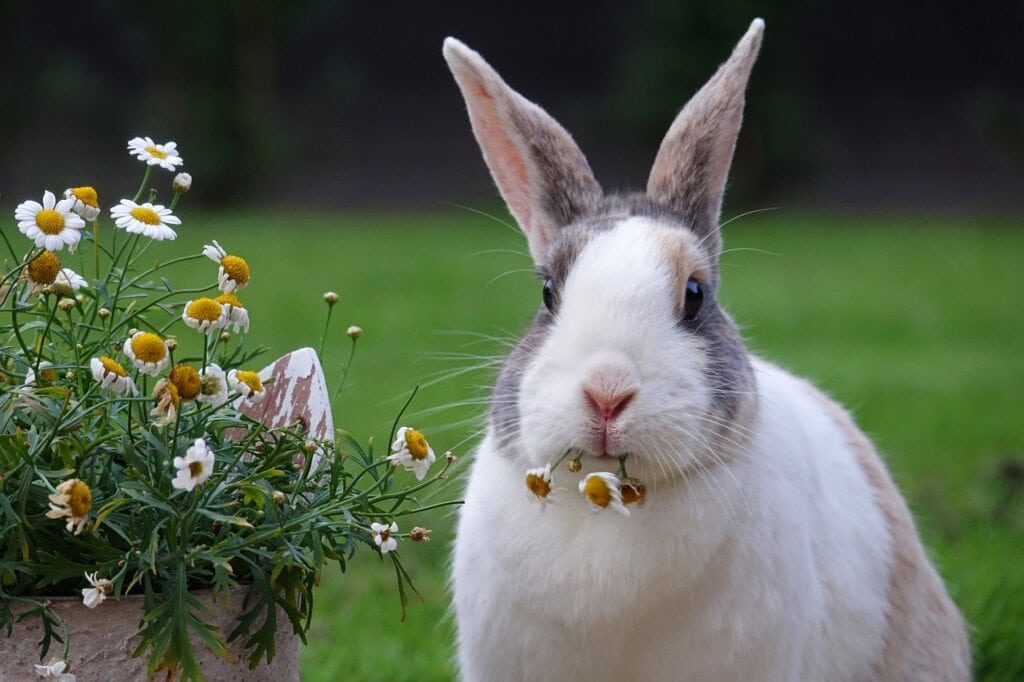
Training 🥎
As earlier mentioned, Dutch rabbits have a history as show rabbits. Since they are quite brilliant, they can be trained to obey simple commands, do simple tricks, and even use the litter box. Some overly enthusiastic rabbit lovers even train this breed to fetch toys and walk on a leash or harness.
To train a Dutch rabbit to walk on a leash, make sure that it is attached to a harness specifically designed for your rabbit’s size. You can encourage the rabbit to walk on the leash via verbal coaxing or even treats.
In terms of potty training, you might have to be more patient and consistent with the rabbit. Potty training entails allowing your furry friend to roam freely and carry out their business in a rabbit-proofed environment so that you don’t have to clean up after it. However, you can simply place the litter box in a desired position and hang some hay above it so that the rabbits will simply go in the box as they eat.
Grooming ✂️
Thankfully, Dutch rabbits feature a short fur coat, so they are a relatively low-maintenance breed. Moreover, this breed is known to keep up with its grooming, usually daily and sometimes even hourly. Therefore, grooming a Dutch’s fur at least once a week should suffice.
You should only increase the brushing frequency if your rabbit is unable to groom himself due to medical conditions such as arthritis or obesity or simply has something adhesive sticking on its fur coat. However, you might have to brush your rabbit’s coat more often during seasonal shedding and molting that usually happens in spring and fall because they will tend to shed their coat more than normal.
Since Dutch rabbits virtually clean themselves, bath time may not be necessary. However, if your rabbit is predisposed to getting messy from its excretions, cleaning the soiled area is the best idea. But do not submerge the rabbit in water, no matter how warm it may be.
Instead, use a clean damp cloth to clean the affected area as needed, then thoroughly dry the coat. Be very cautious when cleaning the facial area because Dutch rabbits have very sensitive ears.
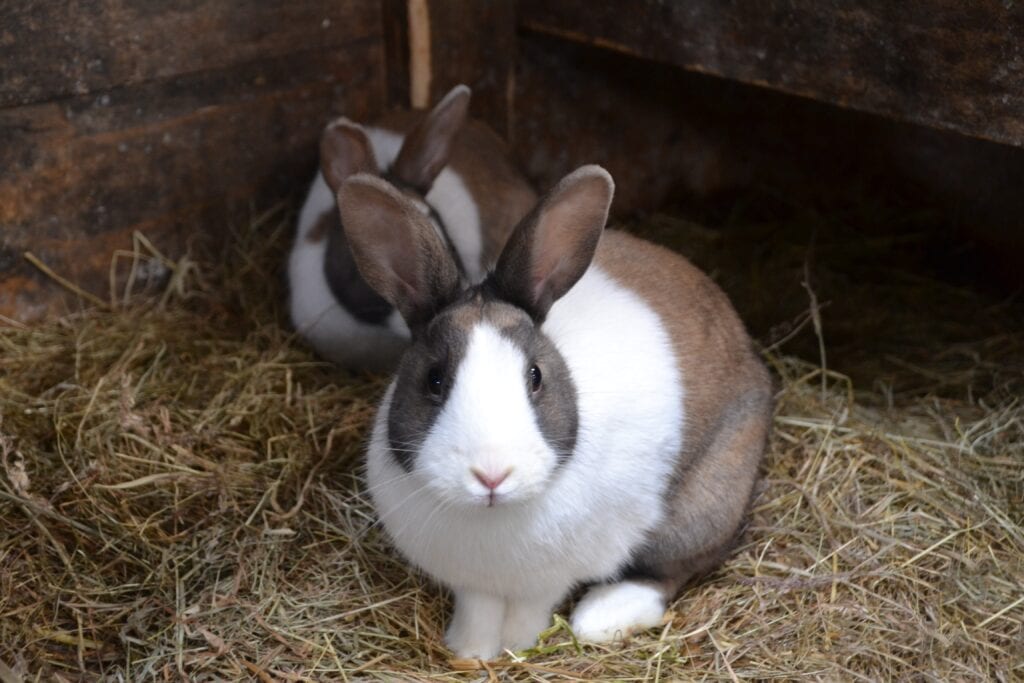
Lifespan and Health Conditions 🏥
Like most domesticated rabbit breeds, the Dutch rabbit has an average lifespan of five to nine years. All things considered, this is a reasonably long lifespan for a rabbit and is perhaps why most people consider the breed a fantastic house pet for those looking for a longtime companion.
Their long-life expectancy can be attributed to the fact that they lack many serious conditions associated with rabbits, so they are typically on the higher end of the health issue spectrum. Be that as it may, Dutch rabbits are still predisposed to common bunny health issues. They include:
- Respiratory issues
- Uterine cancer
- Dental problems
- GI stasis
 Male vs Female
Male vs Female
Moreover, female Dutch rabbits tend to be more territorial and dominant than their male counterparts. Aggressive females are likely to lunge or growl at a potential threat.
3 Little-Known Facts About the Dutch Rabbit
1. Dutch rabbits are not Dutch
Even though some historians claim that the Dutch Rabbit has its origins in Holland, it was actually developed in England. Breeders in the UK created this breed from Belgian meat rabbits whose origin can be traced back to the 15th century.
2. This breed gets its name from Dutch markings
Despite the myriad of misconceptions about the name of this breed, it actually gets its name from its rare face and collar markings. These distinctive markings are referred to as Dutch markings.
3. Dutch rabbits have a 2-foot vertical leap
Despite their small size, Dutch rabbits can leap a decent distance! Some Dutch rabbits can leap higher, but this will depend on their weight, health, and why they need to leap.
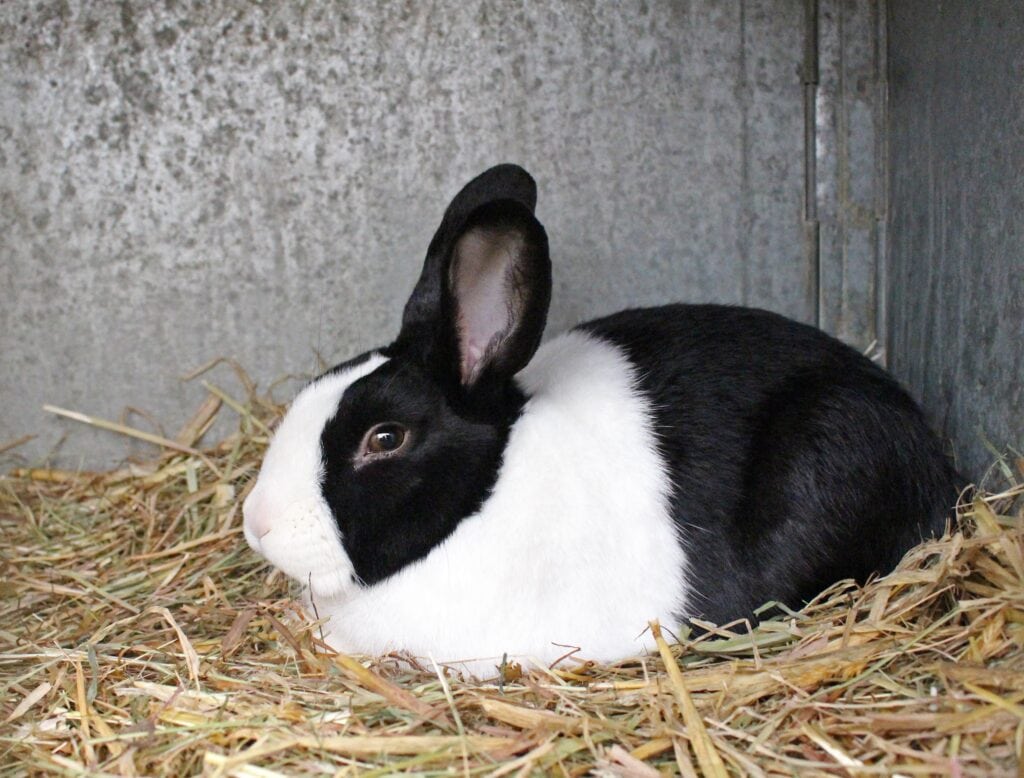
Final Thoughts
Granted, the name of this rabbit breed may suggest that it has its origins in Holland, but it is a well-traveled bunny. This breed features unique coat colors and has an affectionate and friendly personality, making it one of the best pets you can keep in your home.
Besides being a good human companion, it is also a low-maintenance breed. However, it thrives best with another rabbit companion, an adequate diet made up of hay, and plenty of water. They are also small in stature, meaning you can opt to keep them indoors or outdoors. Whichever habitat you choose, just make sure it is always clean to improve your rabbit’s overall comfort in your home.
Related Read:
- Polish Rabbit Breed Info: Pictures, Temperament & Traits
- Fauve De Bourgogne Rabbit Pictures, Care Guide, Lifespan & Traits
Featured Image Credit to: Volha Suhakova, Shutterstock

 Things to Know When Owning a Dutch Rabbit:
Things to Know When Owning a Dutch Rabbit: